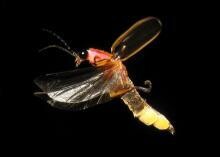Bright Ideas from Fireflies: Biomimicry for Sustainable Design
The concept of designing for sustainability has been well defined and promoted by groups like the United Nations Environment Program for many years, and product innovation using this concept is undoubtedly a central piece to the sustainability puzzle.

The concept of designing for sustainability has been well defined and promoted by groups like the United Nations Environment Program for many years, and product innovation using this concept is undoubtedly a central piece to the sustainability puzzle. Within this approach, designers are taught to strive for the classic outcomes of cleaner production, such as increased energy efficiency, reduced use of toxic materials, greater use of recycled materials, and extended product life.
But there is a gap between knowing the desired outcomes and actually conceiving and creating the products and technologies that will get us there. How do we truly innovate when it comes to product design? If our conventional industrial approaches result in unsustainable products, then where do we find inspiration to drive sustainable design?
A recent innovation in LED lighting reminds us that we may only need to look as far as the natural world that surrounds us. A team of researchers at the Korea Advanced Institutes of Science and Technology designed a new organic LED that emits 60% more light than conventional bulbs. Their inspiration: the shape of a firefly’s lantern! By emulating the tile structure that covers a firefly’s lantern into the design of the LED bulb, they were able to increase the amount of light obtained from the same power input. This has the potential to reduce the energy needed to power LED screens, which could have a number of environmental benefits.
This is an example of Biomimicry – the process of identifying sustainable product designs by emulating the structures and processes of the natural world. Natural organisms and ecosystems have sustained themselves by adapting and evolving over thousands or even millions of years. The Biomimicry approach suggests that there is endless inspiration to be found in learning about and emulating these simple structures and designs in our own products and technologies. Examples of successful applications include reducing the energy consumption of an electric train by modeling the front end after a Kingfisher’s beak, to designing safer and more efficient wind turbine blades based on the form of a humpback whale fin.
Biomimicry is one among many innovation techniques needed to achieve our sustainability goals. Do you have any interesting biomimicry examples to share? What inspires you to design more sustainable products? We’d love to hear your ideas to add to the discussion!